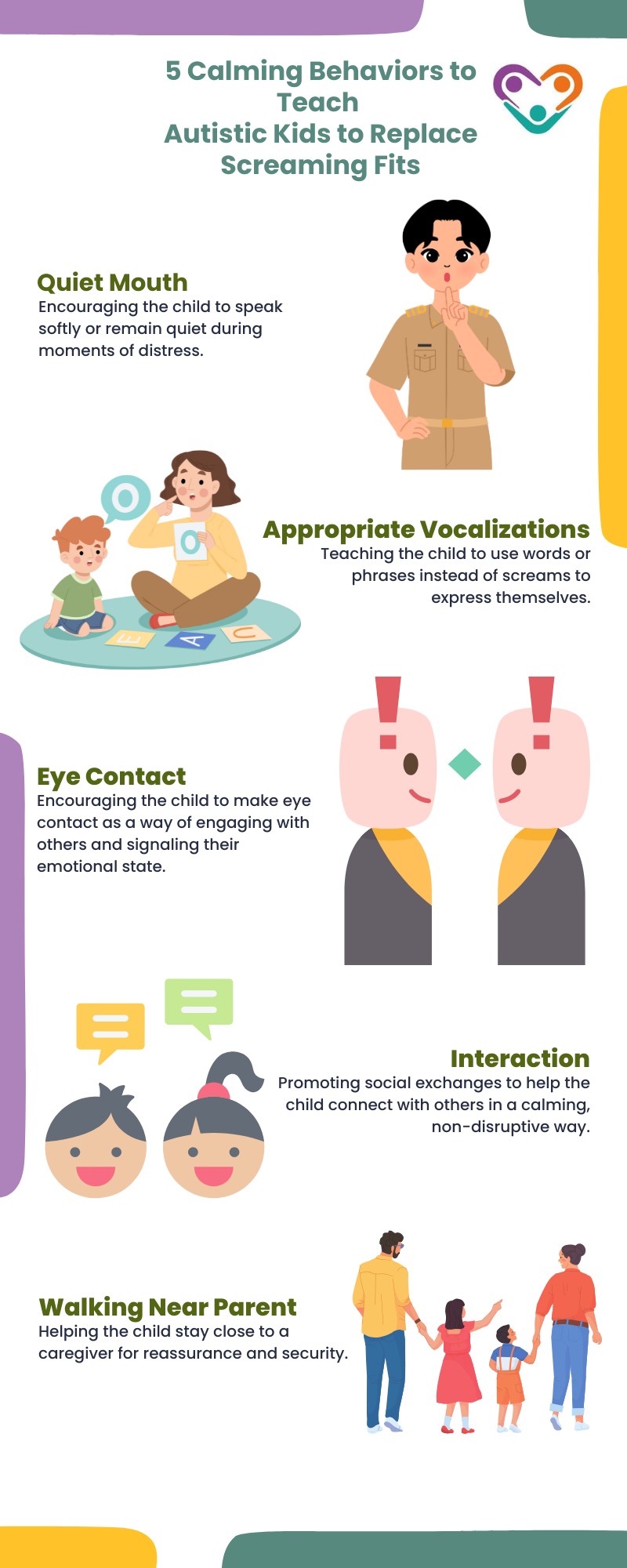Screaming fits in autistic children are a common, yet often misunderstood, behavior. These intense outbursts can be distressing for both the child and those around them, but they are not just random acts of defiance.
For many children with autism, screaming fits are the result of sensory overload, frustration, or difficulty in expressing their emotions. Understanding the underlying causes of these fits can help parents, caregivers, and educators manage the behavior more effectively and provide the child with the support they need.
The Challenge of Communication
Communication difficulties are central to autism. Many children on the spectrum struggle with verbal communication, which can lead to frustration and emotional distress when they cannot express their needs, wants, or discomfort.
For instance, a child might scream when hungry, tired, or in pain because they lack the vocabulary or understanding of how to request food, rest, or assistance.
When these communication gaps are present, emotions can build up, leading to overwhelming outbursts. This cycle of frustration can contribute to the frequency and intensity of screaming fits, making them appear as though the child is acting out when, in fact, they are simply trying to cope with their environment and their feelings.
It’s worth noting that screaming fits are not necessarily an expression of defiance or bad behavior. They are often a manifestation of the emotional turmoil an autistic child is experiencing.
When a child can’t effectively communicate or regulate their sensory input, the result can be an emotional overload, often expressed through screaming.
It’s important to recognize that these behaviors are not intentional acts of rebellion. Instead, they are often a desperate attempt to communicate distress or discomfort. Parents and caregivers who approach these situations with patience and understanding can help defuse the situation and provide better support for the child.

3 Strategies for Managing Screaming Fits
While screaming fits can be overwhelming, there are strategies that parents and caregivers can use to manage these behaviors effectively. The goal is to reduce the frequency of the outbursts by addressing the underlying causes, such as sensory sensitivities and communication difficulties.
Let’s look at some effective strategies that parents and caregivers should consider.
Positive Behavioral Support
One of the most effective methods for managing screaming fits is positive behavioral support. This approach focuses on reinforcing desirable behaviors rather than punishing undesirable ones. By recognizing and rewarding calmness and appropriate behavior, caregivers can help the child learn alternative ways to express themselves.
For example, parents can use a strategy called “TAGteach,” a behavioral technique that employs positive reinforcement and event markers, such as a click sound, to signal when the child has exhibited a desired behavior.
This technique has been shown to be effective in promoting calmness and improving communication skills in children with autism.
Teaching Calming Behaviors
Another helpful strategy is to teach calming behaviors that can replace screaming. These behaviors may include:

By focusing on one or two calming behaviors at a time, parents can reinforce these positive actions and help reduce the occurrence of screaming fits.
The Importance of Early Intervention
Early intervention is key in addressing screaming fits and other challenging behaviors in children with autism. Research has shown that the sooner children receive support, the better their outcomes tend to be.
Early intervention can provide children with the tools they need to communicate more effectively, regulate their emotions, and manage sensory sensitivities.
With the right support, autistic children can learn how to express their needs in less disruptive ways. This not only helps to reduce screaming fits but also improves their overall quality of life. Early intervention may include speech therapy, occupational therapy, and behavioral interventions that target communication and sensory regulation.
For a deeper understanding of how sensory challenges affect autistic children, check out our article, An Overview of Noise Sensitivity in Autistic Kids. It offers valuable insights on how noise sensitivity can impact daily life and provides strategies for managing these challenges effectively.
Reinforcing Positive Behaviors with TAGteach
TAGteach is a positive reinforcement method that can be particularly effective in managing screaming fits.
TAGteach involves using a click sound (or another event marker) to signal when the child has exhibited a desired behavior. For example, when a child demonstrates “Quiet Mouth” or “Appropriate Vocalizations,” the caregiver can use a click to mark the moment and immediately provide positive reinforcement, such as praise or a small reward.
The key to success with TAGteach is consistency. Parents and caregivers must consistently reinforce desired behaviors and provide immediate feedback. Over time, the child will learn to associate calmness and communication with positive outcomes, helping to reduce the frequency of screaming fits.
The science behind TAGteach is rooted in the principles of Applied Behavior Analysis (ABA). By using positive reinforcement alongside event markers, TAGteach helps to teach new behaviors and reinforce positive actions.
This method can be especially helpful in reducing screaming fits, as it focuses on teaching calming behaviors and rewarding moments of success.
Conclusion
Screaming fits in autistic children are often a response to sensory overload, communication difficulties, and emotional frustration. By understanding the underlying causes of these outbursts, parents and caregivers can implement strategies that reduce the frequency of these fits and promote more effective communication.
Positive behavioral methods, like TAGteach, can play a vital role in teaching children new skills and behaviors, ultimately creating a calmer and more peaceful environment for both the child and the caregivers.
With patience, consistency, and the right strategies, parents and caregivers can help children with autism navigate their world more effectively, which can lead to fewer screaming fits and greater emotional regulation. At Golden Care Therapy, we provide high-quality, compassionate ABA therapy tailored to each child’s unique needs. Our team is proud to offer autism services in New York, New Jersey, Indiana, Georgia, and Florida.
If you’re looking for meaningful support and proven strategies to help your child thrive, contact us today to learn how we can help. Let’s take the next step together.
Sources:



